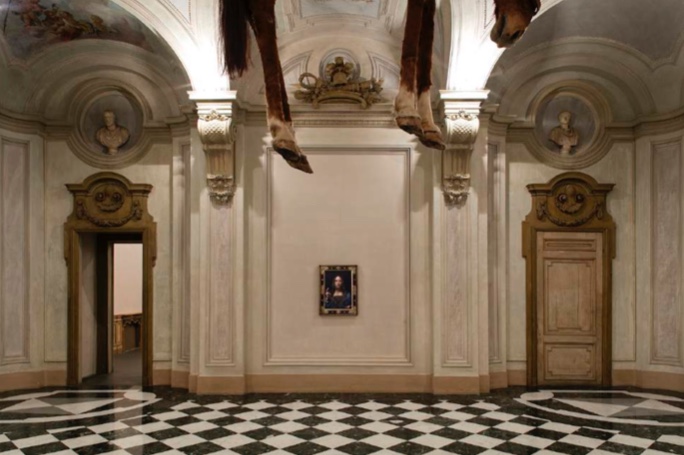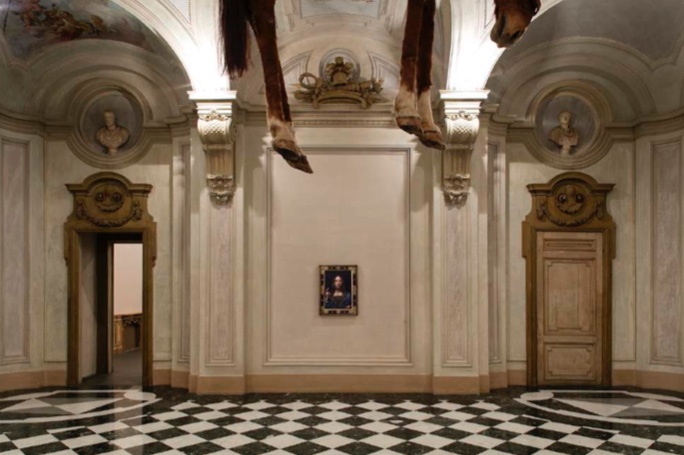[ad_1]

An image provided by the museum, of Salvator Mundi accompanied by a detail of a hanging Maurizio Cattelan sculpture.
PHOTO ANTONIO MANISCALCO. COURTESY CASTELLO DI RIVOLI MUSEO D’ARTE CONTEMPORANEA, RIVOLI-TURIN
At the moment, the Castello di Rivoli Museo d’Arte Contemporanea in Turin, Italy, is hosting an exhibition titled “D’après Leonardo” that is timed to the 500th anniversary of the Old Master’s death and that includes a work each by his student Marco d’Oggiono and the gnomic Italian postwar artist Gino De Dominicis.
On Tuesday, the Castello di Rivoli said that it will add a mysterious, unidentified work to the show on Wednesday that has something to do—or, it teases, might actually be—Leonardo’s Salvator Mundi (ca. 1500), which sold for some $450 million at Christie’s New York in 2017 and has since been the source of endless speculation and debate about its authenticity and current location. (The prevailing rumor is that it resides in Saudi hands.)
To quote the museum’s unorthodox press release, which makes the announcement in the form of a question: “From October 30, 2019 will Castello di Rivoli Museo d’Arte Contemporanea present a painting that could be the famous Salvator Mundi by Leonardo da Vinci?”
Naturally, Carolyn Christov-Bakargiev, the museum’s reliably adventurous curator, appears to be the driving force behind this, and had the following to say in a statement:
“The choice to exhibit this third pictorial work, a painting that makes the mystery of the Salvator Mundi even more exciting, emerges from a reflection on the problematic of the critical reception and market that Leonardo da Vinci is going through in our digital age—characterized by a celebration of scientific rather than humanistic culture, by an accelerated dissemination of information, including fake news, and by the difficulty of ascertaining the authenticity of works as well as an increasingly concentrated attention on the canonical figures of art history, such as Leonardo da Vinci.”
In the past, Christov-Bakargiev (who curated the superb Documenta 13 in 2012) has questioned the authenticity of the Salvator Mundi and cast aspersions on the experts and Christie’s for selling the work as Leonardo. She said, memorably: “it is a bad painting. history will haunt you.”
What to make of all this? It seems likely to be some sort of experiment in how fake news spreads, but as soon as we have more information, we’ll share it here.
[ad_2]
Source link

